Blast torso interaction
This test illustrates the complexity of the dynamics of a human body due to the difference of impedance of the different organs.
Description of the test
A schematic body is represented by a liver inside an homogenuous torso.
- Description of the liver inside a homogenuous torso:
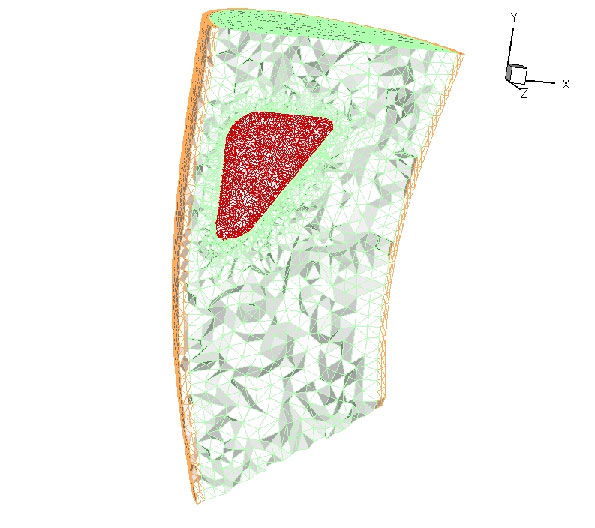
The materials properties are:
If the material properties of the liver are realistic, the ones for the torso are assumed to enhanced the difference of density due to the
lighter organs and of rigidity due to the bones.
The solid mesh is composed of 19562 nodes while the fluid mesh is a 5-m cube with 100 cells in each direction (level 0).
An initial explosion of 0.5kg TNT occurs at 1.5m of the torso. This explosion is represented by a pressurizaed sphere at hot temperature.
- Initial condition: a hot pressurized sphere resulting from an explosion:
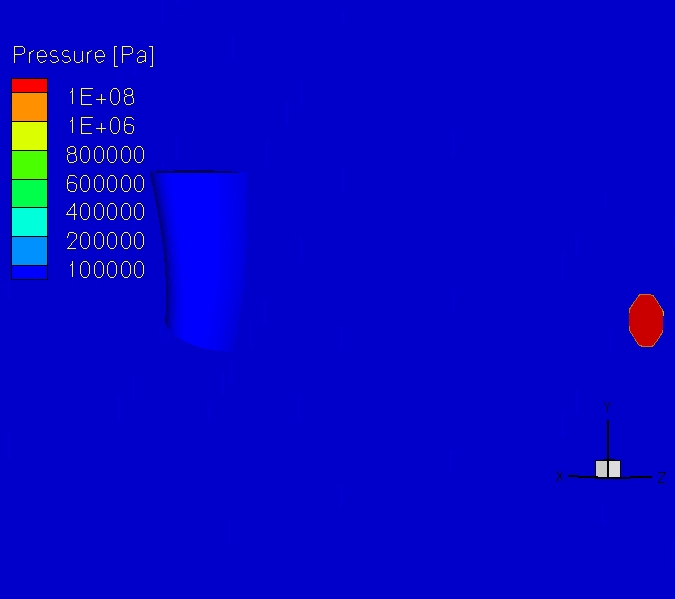
Simulation
The simulation ran on turing and took 10 hours on 20 processors (10 nodes with two 2GHz G5 processors by node, interconnected with high-bandwidth, low-latency Myrinet network) to compute 6ms of simulation.
The initial hot sphere leads to the creation of a shock wave that propagates to the torso:
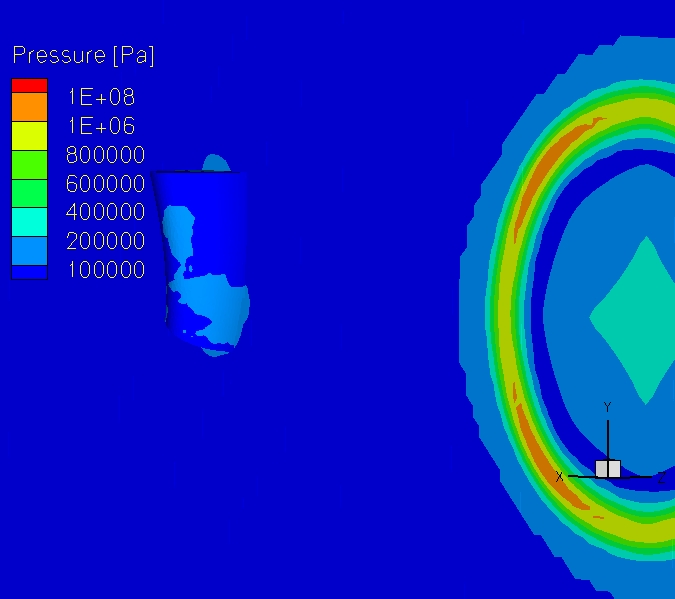 | 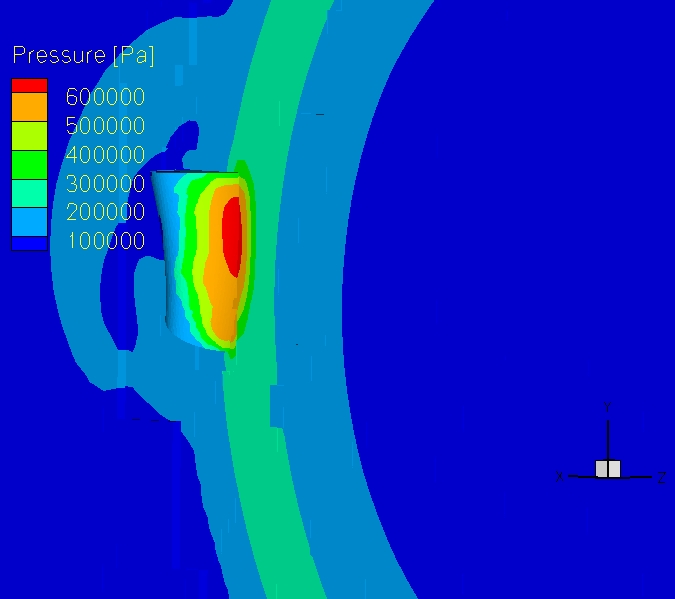 |
| Time=0.31ms | Time=1.55ms |
Due to the difference of impedance between the organs, the internal stress wave is reflected on the liver boundary, leading to a concentration of stress:
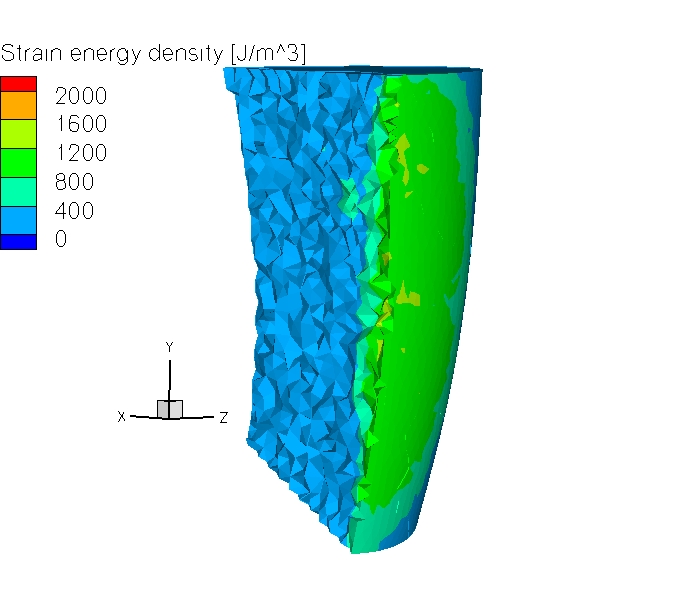 | 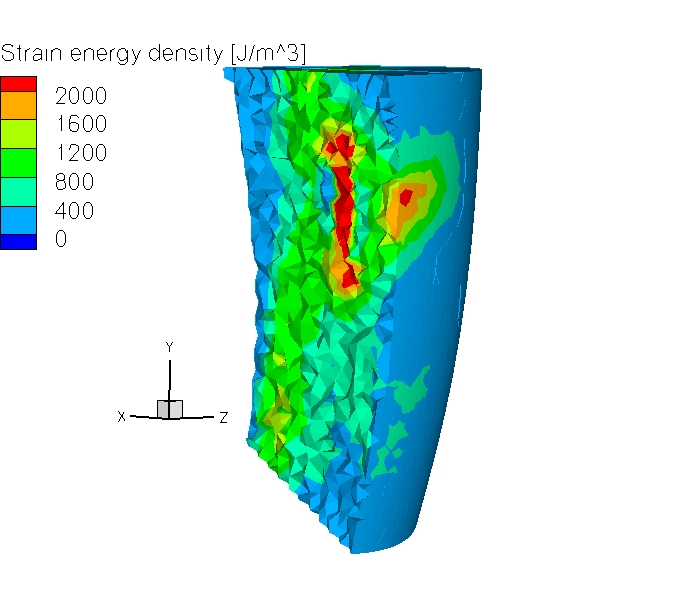 |
| Time=1.55 ms | Time=1.93 ms |
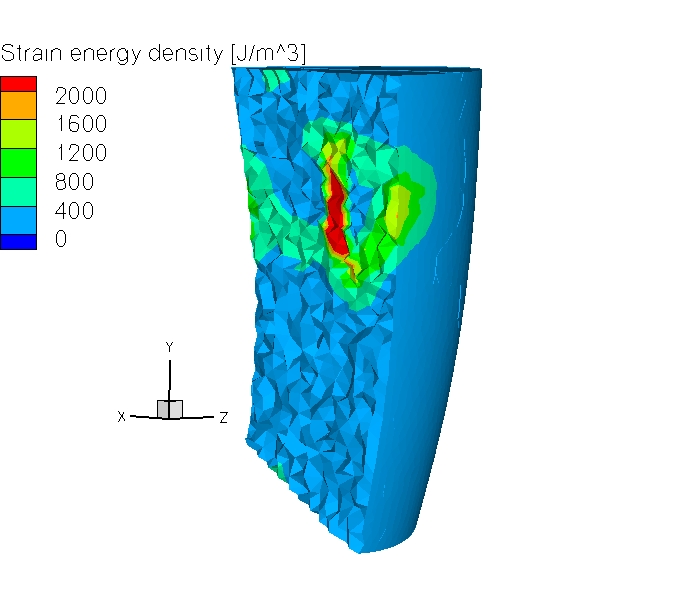 | 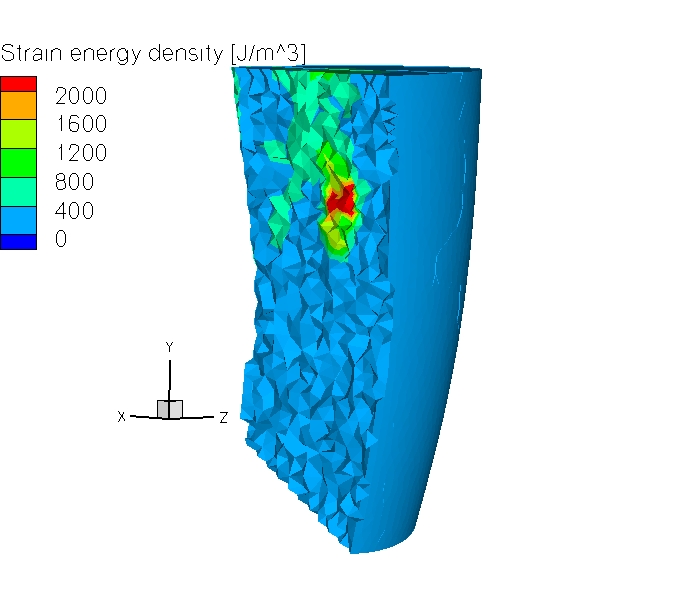 |
| Time=2.28 ms | Time=3.29 ms |
Let us point out the use of the AMR feature that reduces the computational time by refining the shock wave and the surrouding of the body:
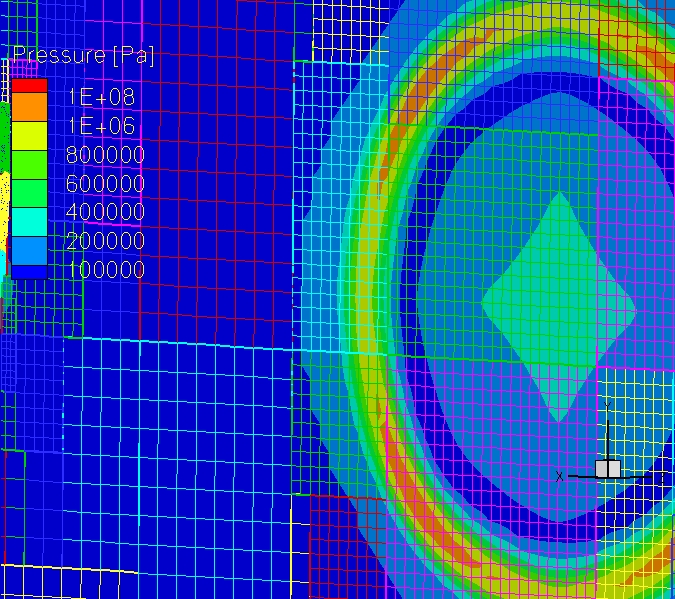 | 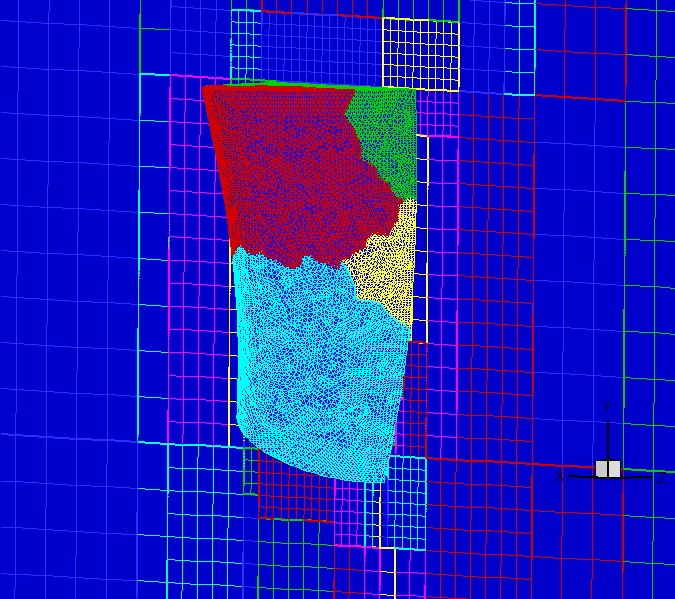 |
| Refinement around the shock wave. | Refinement around the solid. |
--
LudovicNoels - 17 Jul 2005










